.
Liquid manure made from stinging nettles is a must-have in every vegetable garden as you can use it for different purposes: first and foremost as a natural fertiliser for your vegetables, as a tonic to strengthen your plants and as a pesticide to get rid of damaging pests. So let’s not waste any more time, I‘ll show you how to make nettle manure!
Quick overview
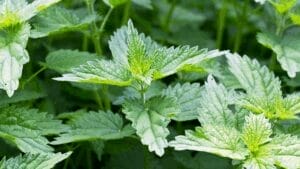
7 Steps to making nettle manure
Step 1: Harvest 1 kg of stinging nettles and chop them roughly.
⇒ Best to wear gloves
Step 2: Put the nettles in a container
⇒ made of wood or plastic. Don’t use a metal container!
Step 3: Fill up with 10 litres of water
⇒ Rainwater is best
Step 4: Add a handful of rock flour
⇒ It binds the odour
Step 5: Stir it all well and cover the container loosely
⇒ Nettle manure needs oxygen
Step 6: Stir daily
⇒ The nettle manure is ready to use when no more bubbles appear.
Step 7: Dilute nettle manure
⇒ Ratio 1:20
How to make nettle manure
Grab your garden gloves, shears and a basket or bucket and get out into nature.
Look for stinging nettles that don’t grow near a street or at the edge of a field so that we can be sure our soon-to-be fertiliser is free from harmful substances.
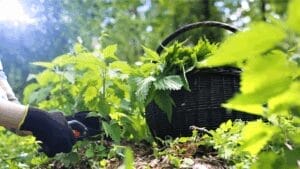
Cut off about 1 kg of stinging nettles and take them home. If you like, you can chop them into pieces of 2 – 3 cm (about 1 inch). That way, you can also fill the nettle residues into your watering can and water them out with the manure. I don’t cut the nettles, but filter the manure and use the remaining nettle parts selectively for certain plants.
Put the nettles into a container that’s not made of metal. That’s important because during the fermentation process, the manure would react with metal, causing undesired chemical processes.
Now, fill in about 10 litres of water. Rainwater is best as it’s soft and doesn’t cost a thing, but you can also use tap water.
It lies in the nature of manure to stink. To keep the smell at least a bit under control, you can add one to two handfuls of rock flour or compost. It helps bind the odour and additionally enriches the manure.
Now stir the liquid thoroughly with a stick and cover the container loosely so that the air can circulate and provide our manure-to-be with oxygen for the fermentation process. Besides, the resulting gases can’t build up pressure.
Stir your manure every day until no more bubbles appear. Now your homemade fertiliser is ready!
How to use nettle manure
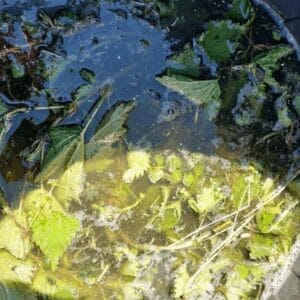
Mature nettle manure is a concentrate and would be too harsh for your plants. That’s why you must dilute it 1:20, that means one part nettle manure and 20 parts water. For example: put 0.5 litres of nettle manure in your watering can and fill up with 10 litres of water. Now, water the soil around your vegetables with it.
Avoid watering the stems or leaves with nettle manure. If you get residues of the fermented nettles on the ground, that’s okay. They’ll rot and provide nourishment for the soil organisms.
Fertilise plants with high nutrient uptake, like tomatoes or pumpkins, every three to four weeks, plants with low nutrient uptake only to strengthen them and if they are infected with pests. It’s best to produce nettle manure continually so that you can use it throughout the growing season.
Stored in a cool and dark place and covered with a lid, nettle manure has quite a long shelf life. Over time, however, nutrients decline, and the manure loses its power. In autumn, therefore, when you don’t have to fertilise anymore, pour the residual nettle manure on your compost heap or dilutedly on harvested patches. Next year, you can make nettle manure afresh.
The different uses of nettle manure
Fertiliser
Nettle manure is a wonderful fertiliser, containing everything your plants need. The nutrients are instantly available, and that’s why your plants will thrive when you fertilise regularly with nettle manure.
Before you plant your seedlings out into the open, dip their root bales in three to four days old (that is: relatively fresh) nettle manure. That strengthens the roots and defences and facilitates taking root.
If your vegetables are a bit weak and don’t grow properly, nettle manure can help. Water your plants every one to two weeks with a dilution of 1:20, and they’ll thrive in no time!
Strengthening tonic
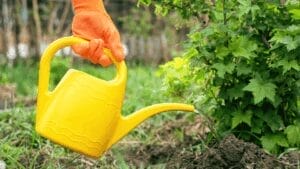
Your plants tolerate capricious weather conditions like heavy rains or lasting drought better when you feed them with some nettle manure.
Or if your veggies have been damaged by hail, nettle manure can help them to recover and grow healthily again
Protection
If your plants are infected with pests, you can help them with nettle manure:
Take nettle manure that’s about 4 – 7 days old and still bubbles powerfully and foams when stirred, and dilute it at a ratio of 1:50. Spray that mixture on a cloudy day or in the evenings on the leaves of your infected plants. That’ll repel aphids and other pests.
If time is of the essence because there are already too many pests, you can also make nettle extract:
Chop up 100 g of stinging nettles and fill them up with 1 litre of water. Let the concoction sit for 24 hours, and use it without diluting.
Ingredients of nettle manure
Due to its wonderful ingredients, nettle manure can be used versatilely. It contains nitrogen and potassium, vitamins and growth-inducing enzymes that push your veggies!
Another substance in nettle manure is silicic acid, which makes your plants strong and resistant. That way, your vegetables can fight off pests and diseases better or cope with damage from hail or downpours.
Making nettle manure is a great way to produce a wonderful energiser for your plants that fertilises and strengthens them at the same time. Nettle manure is easy to make, fast and has so many advantages. Make it continually throughout the summer, and you’ll have a wonderful plant food. So, get out into nature, harvest stinging nettles and make your own nettle manure!
Wanna read more about how to grow vegetables successfully?
These articles might interest you:
Beginner’s guide: How to start a vegetable garden
Easy Vegetables for Beginners: 11 Foolproof Crops for Your First Garden in 2025
Beginner’s Guide to Composting: How to Make Compost In 8 Easy Steps

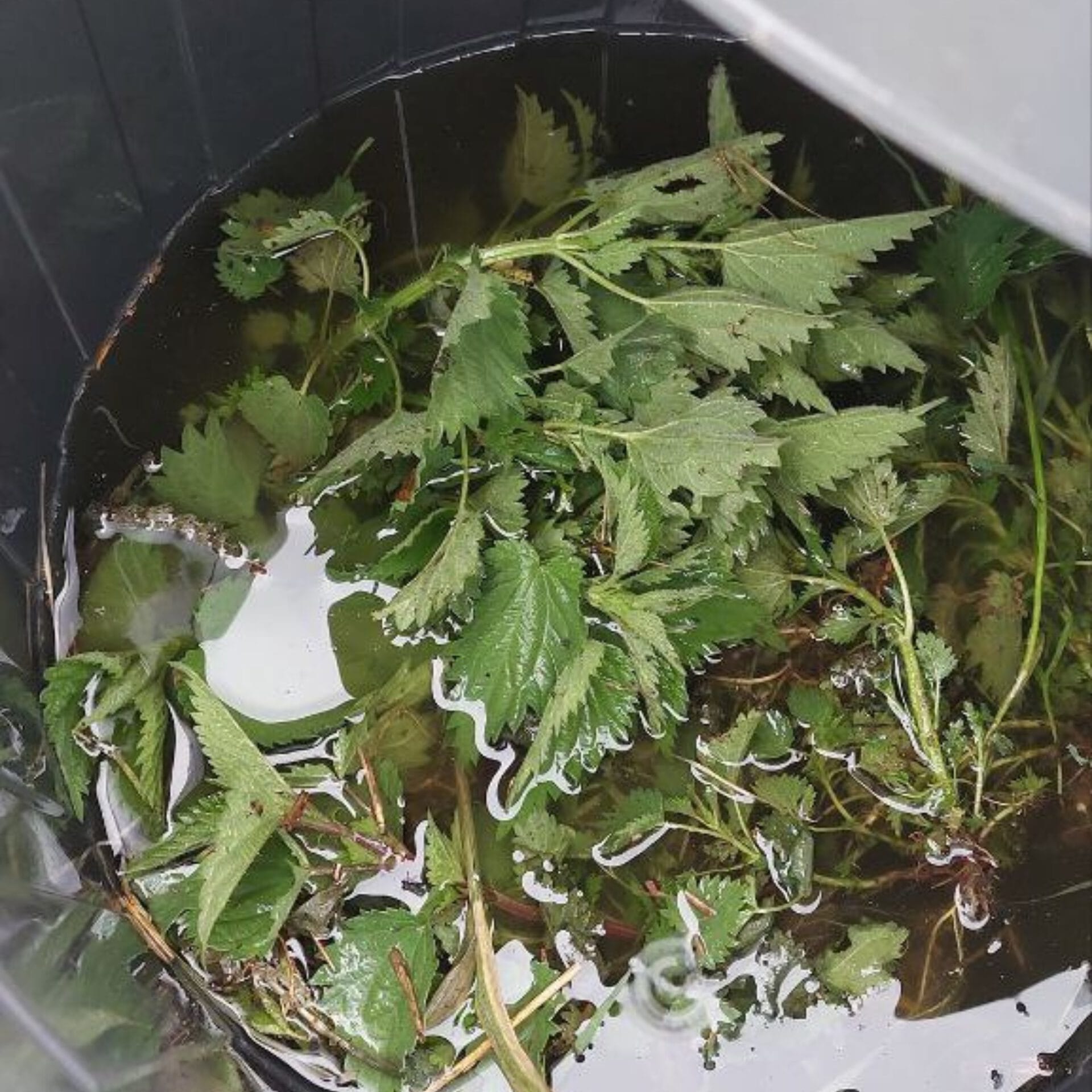
0 Comments